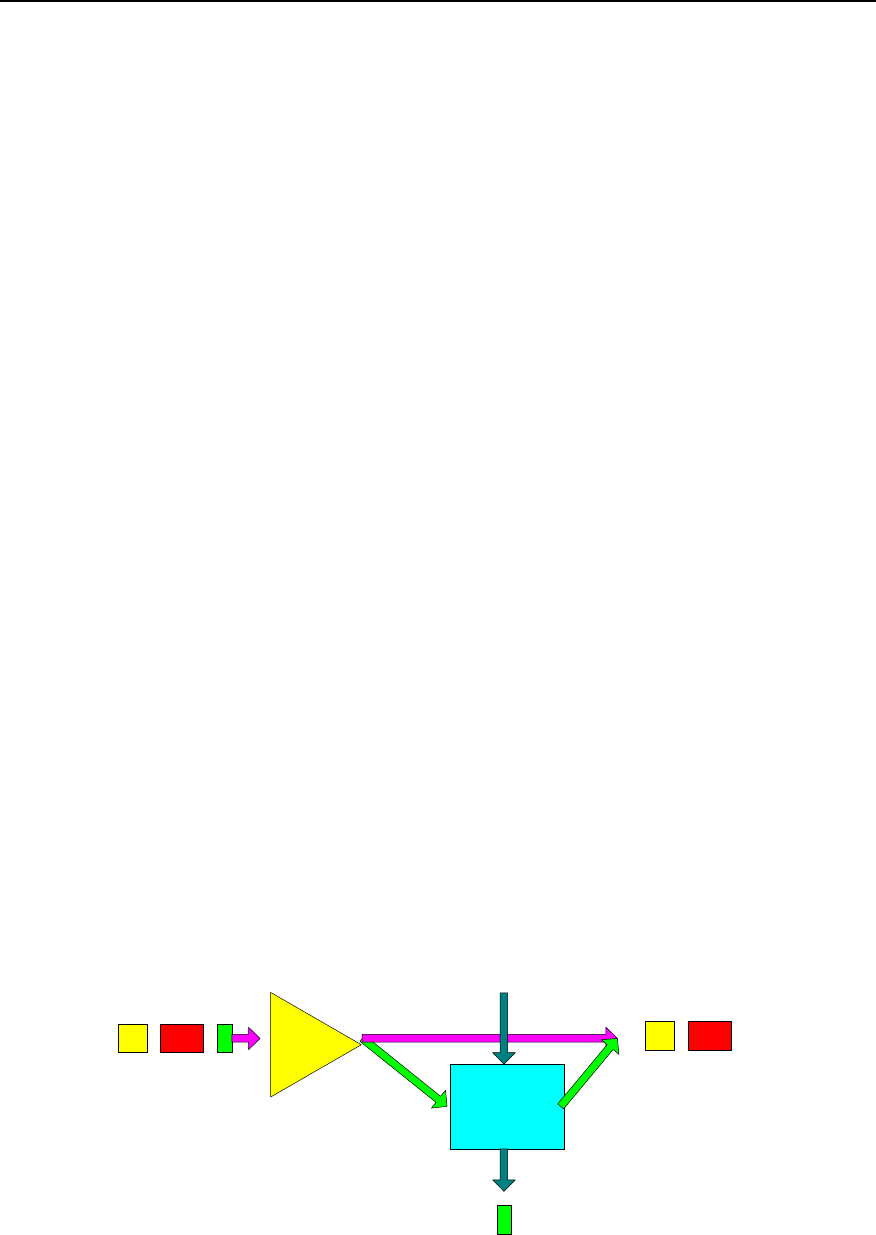
User Manual - Configuration Guide (Volume 3)
Versatile Routing Platform
Chapter 2
Traffic Classification and Policing
2-2
2.1.2 Introduction to Traffic Policing
For ISP (Internet Service Provider), it is necessary to control the load and traffic
imported into the network by the user. For the Intranet, traffic controlling of some
applications will also prove an effective means to control the network state.
The typical function of the Traffic Policing is to supervise the specification of the
imported traffic and confine it to a committed range. If the packet traffic is oversized on
a connection point, under the Traffic Policing, some packets will be dropped or
precedence of the packets will be reset (i.e., confine HTTP packet to less than 50% of
the network bandwidth). Therefore, the network resource and carrier’s interest is
protected from damage.
One example of Traffic Policing is CAR (Committed Access Rate). CAR is widely used
for monitoring and classifying the traffic entering the network of ISP (CAR is so well
known as to be the second name for Traffic Policing). CAR predefines monitoring
actions according to the different evaluation results of the traffic. These actions include:
z Forward. Forward the packet with the evaluation “conforming”.
z Drop. Drop the packet that does not conform to the traffic rule.
z
Lower the precedence level and forward. Mark the packet evaluated as “partly
conforming” with lower precedence and forward it.
z Enter the monitoring of next level. Traffic Policing can be divided into multiple
levels and each level focuses on more specific objects.
Traffic Policing adopts Token Bucket algorithm, as shown in Figure QC-2-1.each type
of service has a corresponding number of Tokens. The Token is sent out at the
specified speed. If the user service arriving speed is greater than the Token sending
speed, actions need to be taken towards these service data which exceed the
prescribed speed (for example, these data can be marked and forwarded only when
there is no congestion. When congestion occurs in the network, these data will be
dropped first.). these packets can also be dropped at the beginning. The specific
method depends on the protocols and rules adopted between the carrier and the user.
I. Features of Token Bucket
Token Bucket can be seen as a vessel with limited capacity containing Tokens. The
system puts Tokens into Token Bucket at a specified speed. when the Bucket is full,
extra Token will overflow and the number of Tokens inside the Bucket will stop
increasing.
Token Bucket
Classify
Packet to be
transmitted
Drop
Forward
Put Token into Token Bucket
at specified speed
Figure QC-2-1 Packet classification and traffic policing


















